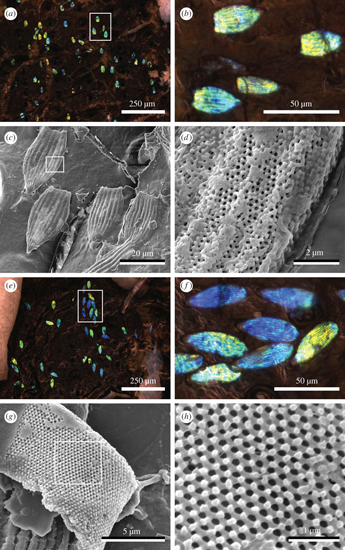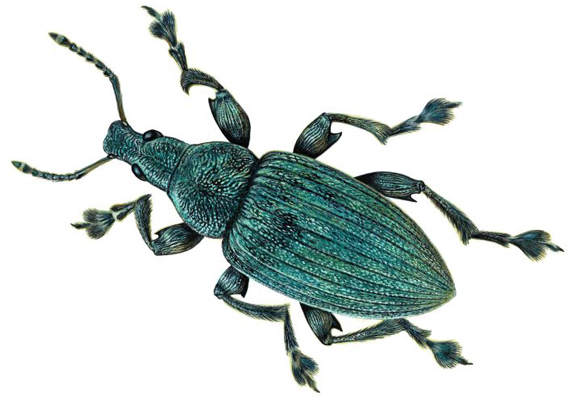New Research Explains Why Some Insects are Iridescent
Researchers Study Weevils from the Pleistocene
Scientists have been studying the preserved wing cases of ancient weevils to help them to better understand how the huge colour palette associated with insects evolved. Writing in the academic, open-access journal “Biology Letters”, the researchers from University College Cork (Ireland), in collaboration with colleagues from Yale-NUS College in Singapore, subjected the preserved elytra of weevils found in Switzerland to powerful electron microscopy to analyse miniscule photonic nanostructures housed within the cuticular scales of the wing case.
Studying Weevil Fossils
The researchers conclude that the vibrant colours produced may have evolved as a form of crypsis (camouflage).
Pleistocene Weevil Scales Reveal Three-dimensional Photonic Nanostructures

Picture credit: McDonald et al published in Biology Letters
Three-dimensional Photonic Nanostructures Housed within Scales
With only the preserved elytra (wing cases), to study the researchers could not pin down the exact genus, but the vibrant greens, yellows and blues produced by the light reflecting structures (photonic nanostructures), identified in the cuticular scales are reminiscent of the living weevil genera Polydrusus or Phyllobius. Although the optical properties of these miniscule structures are well understood, their evolutionary history remains somewhat opaque.
The specimens, believed to be around ten to sixteen thousand years old, were subjected to scanning electron microscopy and small-angle X-ray scattering techniques that revealed that the elytra possess a single-diamond photonic crystal nanostructure. These “diamonds” are one of numerous types of crystal-like nanostructure found in nature that interacts with light to produce vivid colours, often with an iridescent, metallic hue.
A Life Reconstruction of One of the Pleistocene Weevils
Picture credit: James Mckay
Rarely Preserved in the Fossil Record
The preservation of three-dimensional nanostructures within the fossil record of the Insecta is extremely rare. This study represents the second time such nanostructures have been found, the only other instance of such structures being recorded was discovered in another fossil weevil by two of the authors of this scientific paper Dr McNamara (University College Cork) and Assistant Professor Vinodkumar Saranathan (Yale-NUS College).
The team suggest that these hues evolved to allow the insects to blend into their background. These substrate-matching green colours have been maintained over hundreds of thousands of generations suggesting that the same selective pressures for camouflage have been acting on these weevils over millennia. This supports the idea that this type of colouration originally evolved to provide crypsis to prevent these small creatures being seen by potential predators.
The researchers suggest that the fossil record of insects, although sparse, could provide further evidence regarding the evolutionary history of colouration within the Insecta.
The scientific paper: “Brilliant angle-independent structural colours preserved in weevil scales from the Swiss Pleistocene” by Luke T. McDonald, Suresh Narayanan, Alec Sandy, Vinodkumar Saranathan and Maria E. McNamara published in Biology Letters.
Visit the Everything Dinosaur website: Everything Dinosaur.


